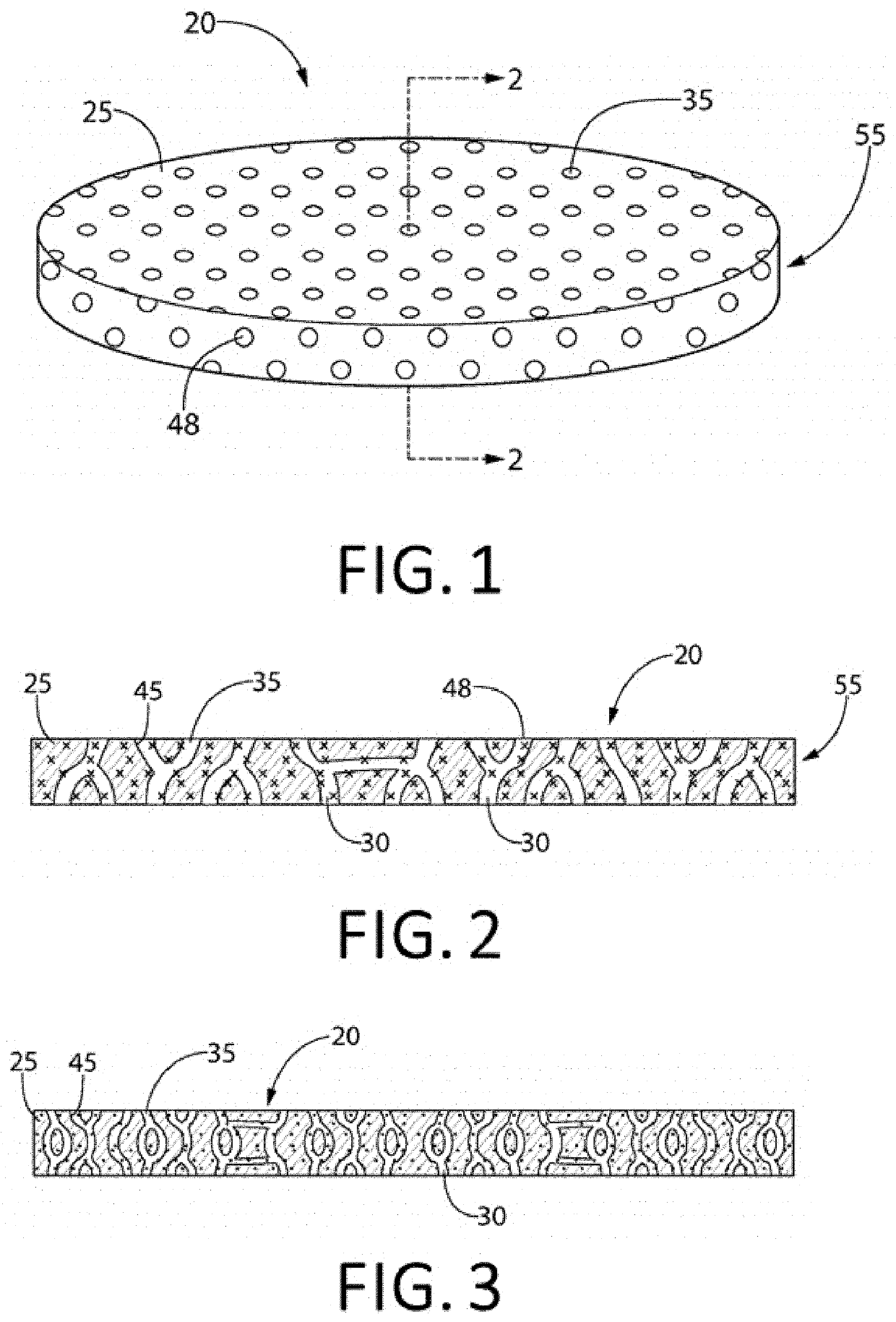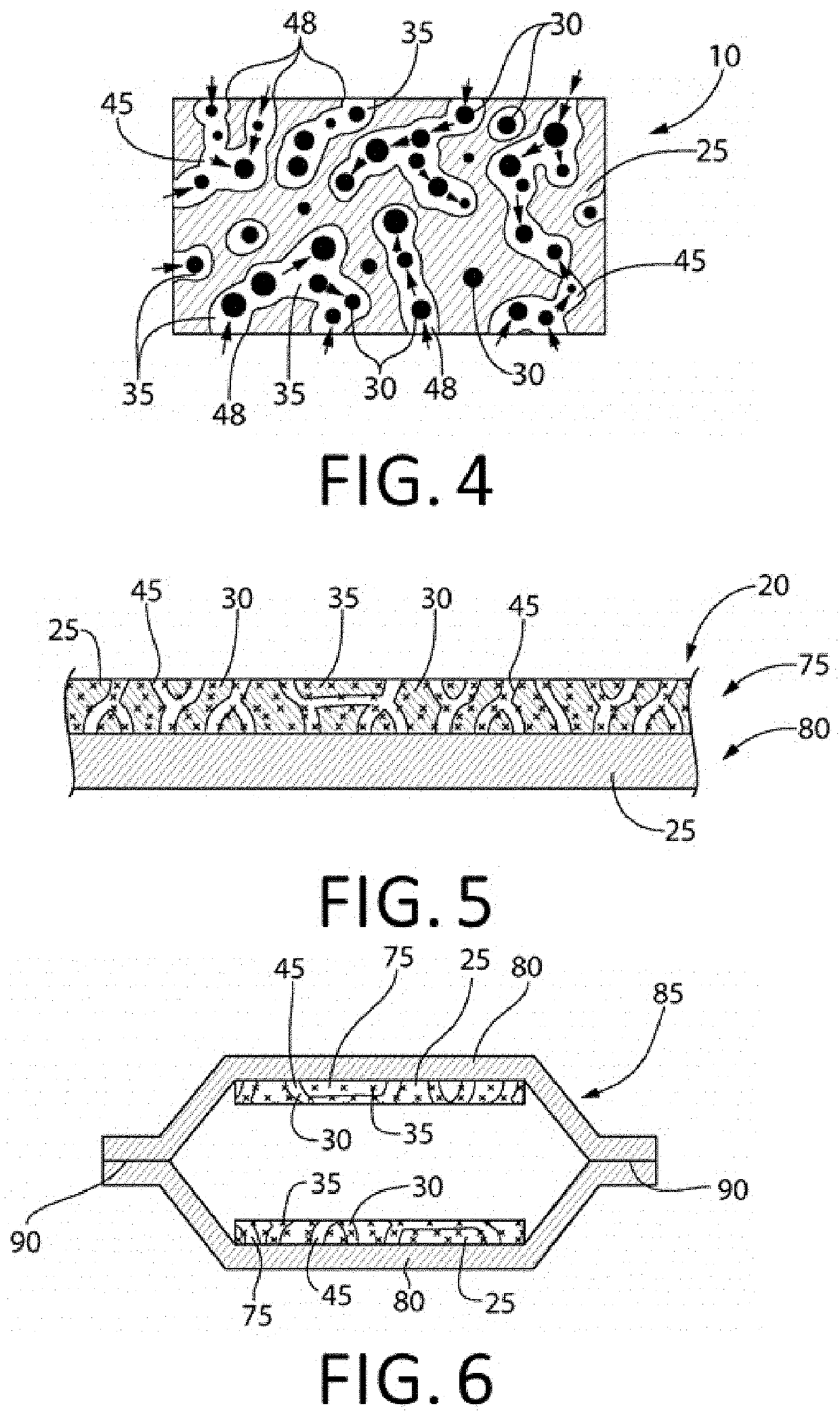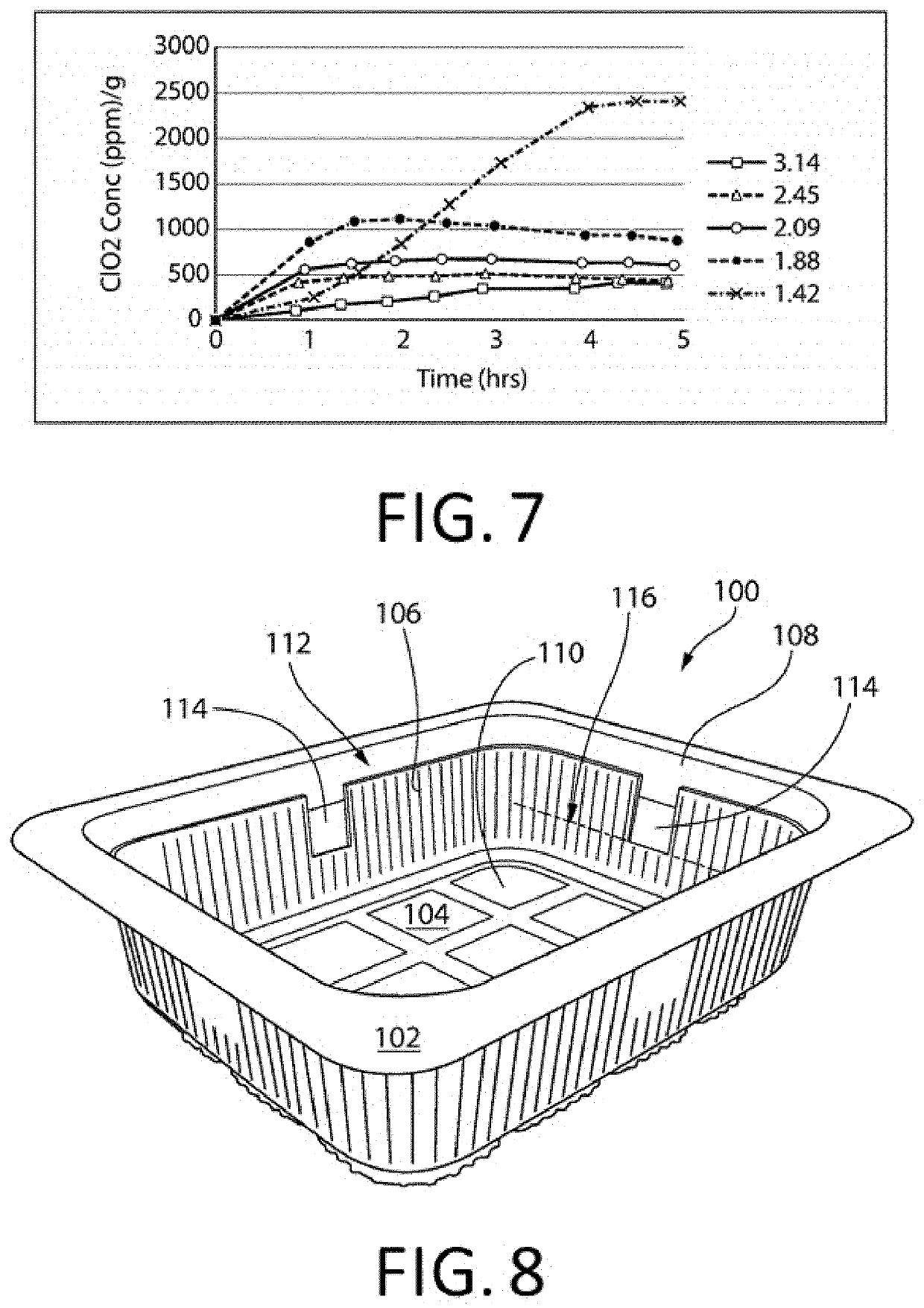Antimicrobial gas releasing agents and systems and methods for using the same
a technology of antimicrobial gas and release agent, which is applied in the direction of disinfectants, biocides, containers preventing decay, etc., can solve the problems of food products being contaminated, food products may be contaminated, and outbreaks of foodborne illness
- Summary
- Abstract
- Description
- Claims
- Application Information
AI Technical Summary
Benefits of technology
Problems solved by technology
Method used
Image
Examples
example 2
Polymer Containing Antimicrobial Releasing Agent
[0174]A film was extruded using an entrained polymer containing the antimicrobial releasing agent described above, a base polymer and a channeling agent according to Table 3 below. A typical thickness of the extruded film is 0.2 mm or 0.3 mm.
TABLE 3Entrained Polymer Film ComponentsFilm #ComponentsWeight %1ClO2 Releasing Composition #150Ethylene vinyl acetate43PEG7
[0175]In a 2.1 L mason glass jar was placed a sponge (1″×1″×½″) at the bottom. Water (10 mL) was added to the sponge and was completely absorbed in the sponge and there was no free water visible. A film strip (2 g, about 1.7″×1″, 0.3 mm thick) was placed at the bottom of the glass jar where there is no physical contact with the sponge. The glass jar was sealed and shielded from ambient light.
[0176]A gas transport line including an output line and a return line was installed with two holes in the lid of the glass mason jar. The air in the headspace of the jar was directed to an...
example 3
Polymer Compared with Reference
[0179]Using Film 1 from Table 3 as an example, the ClO2 release profile of the entrained polymer of the current invention is compared against a reference film as reported in WO 2005 / 041660. The reference firm formulation and preparation methods are set forth in Table 5, immediately below.
TABLE 5Reference Films With Aseptrol and No Channeling AgentFilm PreparationSampleFormulationMethodReference 1Example A of WO 2005 / 041660:Example 1 of WOAseptrol 7.05 - 50 wt. %2005 / 041660Elvaloy 742 - 50 wt. %Reference 2Example B of WO 2005 / 041660:Example 2 of WOAseptrol 7.05 - 50 wt. %2005 / 041660Elvaloy HP661 - 50 wt. %
[0180]The ClO2 release properties of References 1 and 2 were evaluated using the measurement method described above in Examples 1 and 2. The released ClO2 headspace concentration is shown in Table 6 below (normalized to ppm per gram of film) and is plotted in FIG. 9 together with that from Film 1 of an optional aspect of the invention.
TABLE 6ClO2 heads...
example 4
Polymers: pH 1.4
[0183]Samples were prepared with a target pH of 1.4. Individual samples were prepared using each of (a) CaCl2, (b) NaCl, (c) MgCl2, and (d) CaCO3 as the trigger.
[0184]Example 4a (CaCl2)) Silica gel (200 g) was acid-washed for 1 h using a 334 mL solution of 3.9×10−2 M sulfuric acid. The acidified silica gel was dried at 350° C. for 1 h, or until the moisture content was below 2%. The final moisture content for this material was 0.82%. A pH of 1.36 was found for the resulting material. To 12.95 g of the acidified silica gel in a QORPAK® glass jar was added 1.66 g of CaCl2. The jar was shaken vigorously for 5 min to mix thoroughly. NaClO2 (2.00 g) was then added, and the jar was then shaken vigorously for 5 min to mix thoroughly.
[0185]Example 4b (NaCl) In a separate QORPAK® jar, the steps used to prepare the Example 4a powder material were repeated, using NaCl in place of CaCl2.
[0186]Example 4c (MgCl2) In a separate QORPAK® jar, the steps used to prepare the Example 4a ...
PUM
 Login to View More
Login to View More Abstract
Description
Claims
Application Information
 Login to View More
Login to View More - R&D
- Intellectual Property
- Life Sciences
- Materials
- Tech Scout
- Unparalleled Data Quality
- Higher Quality Content
- 60% Fewer Hallucinations
Browse by: Latest US Patents, China's latest patents, Technical Efficacy Thesaurus, Application Domain, Technology Topic, Popular Technical Reports.
© 2025 PatSnap. All rights reserved.Legal|Privacy policy|Modern Slavery Act Transparency Statement|Sitemap|About US| Contact US: help@patsnap.com



